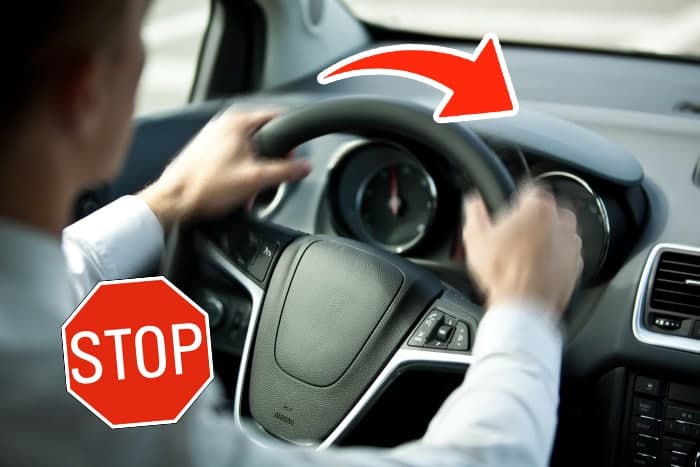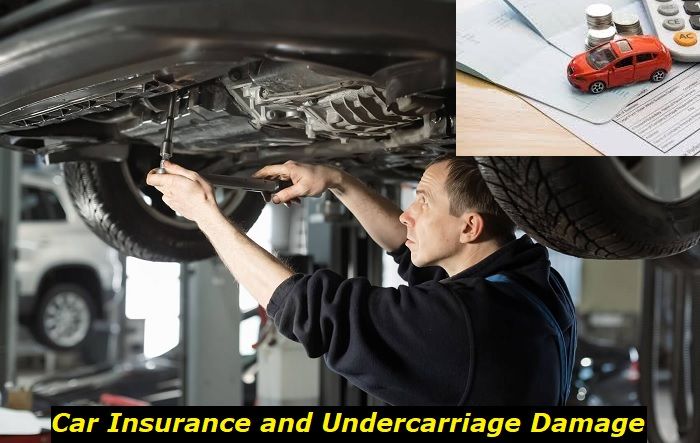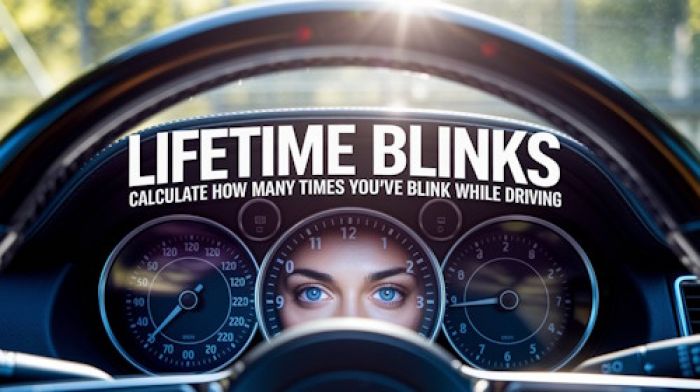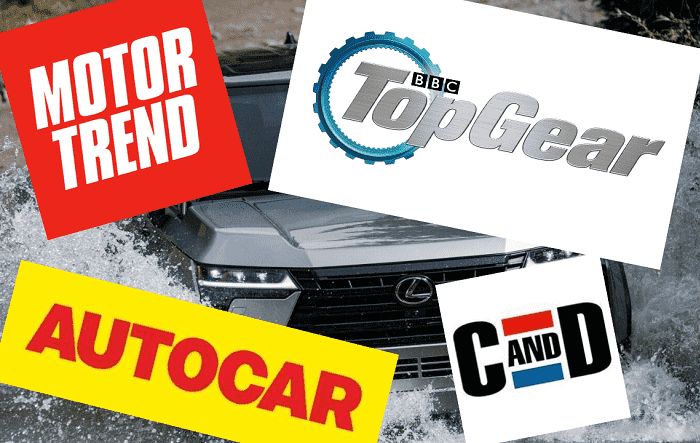
Whenever you experience too much play in your steering wheel, and you see yourself making constant corrections just to keep your car going in a straight line, either your wheel alignment is off or your tire treads are unevenly worn out.
Besides these, inconsistent tire pressures or inconsistent brake and suspension wear are also known to cause your car to drift to a certain side. In any case, make sure you take your car to a licensed and experienced service shop to accurately identify the cause of such issues.
A complimentary tire inspection is usually enough to determine if your tires are suitably inflated. It is paramount that your tires are inflated according to the manufacturer's recommendations and the tire brand and size should also match.
Proper wheel alignment largely depends on the driving conditions, and if you aggressively go over a pothole, it is likely to mess up your wheel alignment. Anyhow, your alignment calculations ought to be readjusted from time to time to proactively solve this issue.
Common reasons why your car pulls to the right:
- Improper wheel alignment
- Inconsistent tire air pressure or tire conicity
- Inconsistent brake wear
- Inconsistent suspension wear
- Uneven road surface
- Torque steer
- Faulty wheel bearing
- The steering system is worn out
- Faulty wheel linkage
Improper Wheel Alignment
Wheel alignment is constantly being altered by different driving conditions, and especially so if the road surface is uneven or of subpar quality. As such, wheel alignment needs to be constantly fine-tuned to cope with contrasting driving environments, especially during harsh winter or summer periods.
For your car to work at its optimum capacity, your wheels need to be centered. This means that the tire rotation should follow a straight line, otherwise it makes the car harder to steer and sometimes even causes unwanted vibrations in the steering wheel.
Inconsistent Tire Air Pressure Or Tire Conicity
Tire pressures are constantly fluctuating, one tire can experience deflation faster than the others, and this often contributes to your car pulling in a certain direction. To remedy this, all you have to do is to air up the tires according to the manufacturer's recommendations.
Apart from inconsistent air pressure, faulty tire conicity happens when an improperly inflated tire pulls the car to one side or the other. Such lateral forces are commonly exerted due to improper manufacturing, and if your tires are new, this might be the reason why.
Inconsistent Brake Wear
To make sure that your brakes are not causing these issues, you ought to determine if this happens only while you are braking. If it is, then it's more than likely that your brakes are not operating in a balanced manner and that they should be replaced or repaired if possible.
This issue is commonly caused by uneven brake calipers. As such, they can even constantly apply brake pressure onto your brake pads, even when you are not using them. Brakes are an essential aspect of car safety, so if you think your brakes are malfunctioning, be sure to immediately inspect the car.
Inconsistent Suspension Wear
A car’s suspension system is comprised out of many different components that connect the car to its wheels in an effort of achieving a smoother, more compliant driving manner. However, if your suspension components are worn out, they are likely going to cause your car to tilt in a certain direction.
Therefore, the car tends to pull to one side and it makes it relatively strenuous to keep the car going in a straight line. Go ahead and take your car in for an inspection, and be sure not to drive the car before these issues are resolved.
Uneven Road Surface
Be that as it may, sometimes the road surface itself is the reason why your car pulls to one side because most road surfaces are at a gradient for better water drainage. Thus, it feels like your car is unbalanced, even though it is not.
Most manufacturers tend to account for this sort of gradient, but it is still possible for your car to pull in a certain direction if there are any discrepancies.
Torque Steer
Many performance-oriented front-wheel-drive cars are known to experience torque steer. This means that the car tends to send more power to a single front wheel during acceleration which means that the car is likely pulling to one side or the other. Torque steer is mostly associated with cars that offer front transversely mounted engines.
“Regular” front-wheel-drive cars are less likely to experience issues such as these, but it's still worth checking if your car suffers from torque steer. This can also be caused by inconsistent tire wear on the front wheels, so be sure to take your car to a professional to pinpoint the issue correctly.
Faulty Wheel Bearing
If you are experienced issues with your wheel bearing, you are likely going to notice it before the car starts pulling unevenly. The most common symptom of a faulty wheel bearing is a grinding noise coming from the wheel well. If you ignore this issue over time, the car is likely going to start pulling to one side or the other.
If a faulty wheel bearing is a reason why your car pulls to one side, contact your mechanic immediately because your car is extremely unsafe to drive. The best thing you can do is listen if your car is making grinding noises, if so, park the car up and search for assistance.
Steering System Is Worn Out
Cars are built with components that wear over time, and it's nothing out of the ordinary if you experience any issues associated with component wear and tear. That’s why you need to carry out all the necessary maintenance and service schedules so you can proactively solve these issues because they are known to cause more issues down the line.
The most common reasons why your car pulls to one side or the other are issues with the tires and the suspension. However, many people tend to ignore that even the steering system can cause these issues. If you experience vibration through your steering wheel, chances are that your car needs a wheel alignment.
Faulty Wheel Linkage
Tie rods can also wear over time, especially if you often drive on bad road surfaces. If you experience your car pulling to the right while taking a right turn, your wheel linkage is likely causing it. Another symptom commonly associated with this issue is the increased shaking of your steering wheel as this issue worsens over time.
Issues such as these also make the driving experience dangerous which means that you will have to take your car to a mechanic in order to fix it before you start driving your car. It’s never a good idea to ignore any issues associated with the way your car steers as these can make the driving experience unsafe for you and everyone else on the road.
FAQ Section
How Much Does A Wheel Alignment Cost?
If you need to align your front wheels, be sure to set aside around $60-120 for the job. Some cars will cost more money than others, but this is the ballpark you should be looking at. The best thing you can do is to perform a wheel alignment now and then which means that you should consider it as a part of your regular car maintenance.
How Do You Drive On Bad Roads?
Many of the issues listed in this article are directly connected to inferior road quality which means that they can even be avoided if you tread carefully. Be sure to know what type of car you are driving and how beefy your suspension is. The general rule of thumb is to drive slowly and try to avoid hitting potholes.
If you need to go over extremely rough roads, drive as slow as possible, and if your car offers adjustable suspension, be sure to raise your car to the maximum height level.
How Much Does A New Wheel Bearing Cost?
On average, the cost of replacing your wheel bearing is $350 per single wheel. These prices vary significantly depending on how upmarket the car is. Some say it's advisable to replace all the wheel bearings at the same time, but if all the others are not extremely worn out, there is no need to replace them all. Just make sure your wheels are balanced.
How Much Does It Cost To Get Tie Rods Replaced?
It depends on if you want to replace the inner or the outer tie rods, however, the average cost is between $40 and $120 with the inner rods costing closer to $120. Some carmakers will sell you both the inner and the outer tie rod together if the assembly is connected. Labor costs should run between $50 and $90.
How Much Does Wheel Balancing Cost?
Many people believe that wheel alignment and wheel balancing are the same, but they are not. Wheel alignment is associated with how your wheels sit when attached to the driveline while wheel balancing is associated with what needs doing to balance the weight of your tires correctly. As such, wheel balancing should cost you between $15-$50 per single tire.
About the authors
The CarAraC research team is composed of seasoned auto mechanics and automotive industry professionals, including individuals with advanced degrees and certifications in their field. Our team members boast prestigious credentials, reflecting their extensive knowledge and skills. These qualifications include: IMI: Institute of the Motor Industry, ASE-Certified Master Automobile Technicians; Coventry University, Graduate of MA in Automotive Journalism; Politecnico di Torino, Italy, MS Automotive Engineering; Ss. Cyril and Methodius University in Skopje, Mechanical University in Skopje; TOC Automotive College; DHA Suffa University, Department of Mechanical Engineering






Add comment